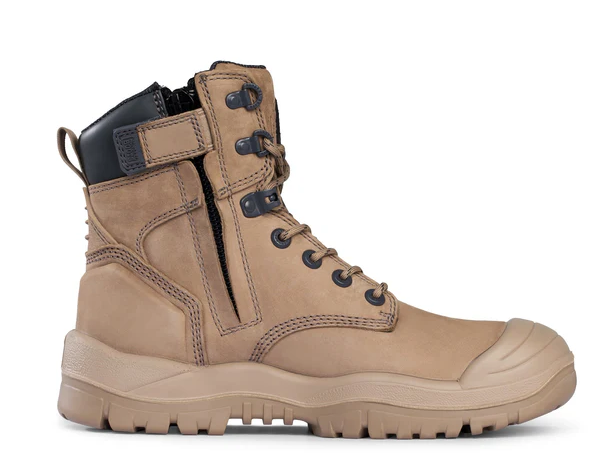Work boots, essential gear for many professions, are designed to provide protection, support, and comfort during long hours on the job. When it comes to buying new work boots, you will encounter more questions regarding fit. Right? You are not alone! Many people are facing this issue. Finding the right balance between a snug fit for stability and comfort. Tight work boots can cause discomfort, blisters, and even foot problems, while loose boots can lead to instability and potential injuries. Here, you will look into how work boots should fit to ensure safety and comfort.
Heel
When it comes to work boots, the first thing you need to consider is the heel. Make sure your heel fits comfortably in the safety shoe, leaving just enough space for little mobility. A good fit around the heel is vital for support and safety. High-quality mens workboots will be designed to cradle the heel and give padding to absorb shocks when walking and moving throughout the day.
Arch Support
The next thing you need to consider is arch support. Check for comfortable arch support in the midfoot area of the work boot. Adequate arch support helps prevent overpronation, which can lead to foot and body issues. Look for mens workboots with arch supports that maintain their shape under pressure, which ensures long-term comfort and support during prolonged wear.
Ball Position
Position the ball of your foot in the widest part of the footbed of the work boot. The boot should allow the ball of your foot to rest naturally without scrunching or tightness. This ensures proper flexibility and movement of the toes, providing a comfortable fit for walking and other activities. While the fit should be snug and secure, it should not be too tight or restrictive, allowing for natural foot movement.
Toe Space
Leave sufficient space for your toes to wiggle comfortably inside the work boot. There should be approximately an inch of space between your toes and the edge of the toe box. Avoid cramming or scrunching your toes, as this can lead to discomfort and potential foot issues over time. Providing adequate toe room allows for natural movement and flexibility, enhancing overall comfort and preventing toe-related injuries.
Overall Fit
Finally, check the overall fit of the work boot. Work boots should feel snug and supportive without causing discomfort, pinching, or pressure points. If the boots feel uncomfortable during the try-on process, consider adjusting the size to ensure a better fit. It is important to consider a balance between a snug fit and excessive looseness. Avoid wearing boots that are too large, as they can lead to slipping and sliding, increasing the risk of accidents and injuries.
Final Words
Work boots are an essential piece of gear for many professions, and finding the right fit is crucial for safety, comfort, and durability. When trying on work boots, make sure to wear the socks you will be wearing on the job, check for wiggle room, and ensure the heel and midfoot fit. Following these tips, you can ensure a proper fit for your work boots and stay safe and comfortable.



